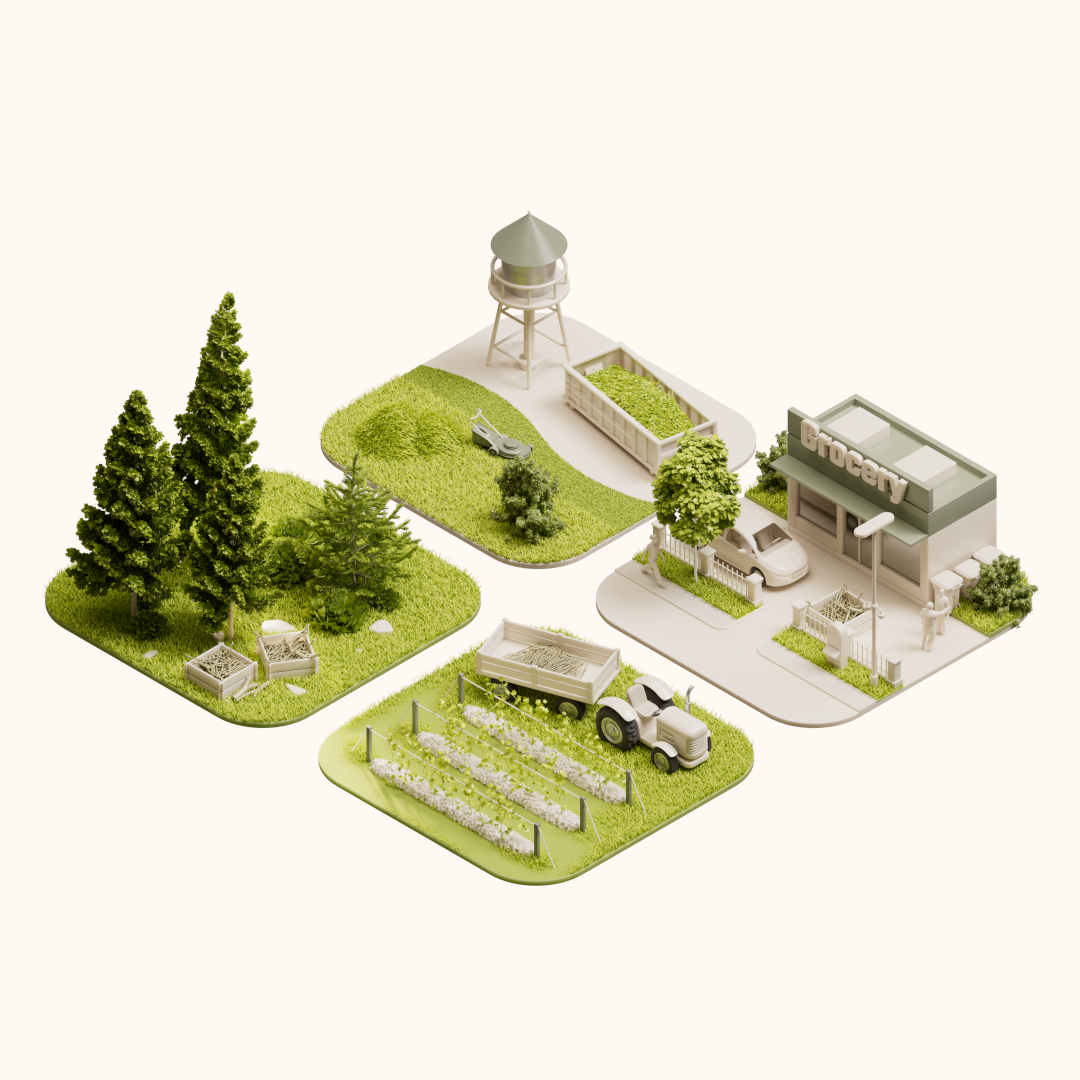Biomass - a raw material with climate potential
Why biomass is key to the climate transition
Our landscape produces more biomass than we use sensibly. Cuttings from roadside greenery, prunings from viticulture or natural wood chips from landscape conservation are thermally utilized in many places - i.e. burned. What is lost in the process is a valuable raw material and an enormous opportunity for carbon sequestration.
This is precisely where there is huge potential: if organic waste is not burned but carbonized, it becomes a permanent carbon store - biochar. This can keep CO₂ in the soil for centuries, improve soils and enable new value creation.
The use of biomass as a source material for pyrolysis instead of incineration is therefore a concrete lever for climate protection, circular economy and sustainable soil management - regionally and immediately implementable.
How we make efficient and sustainable use of biomass
We don't see biomass as waste, but as a resource. We pursue a multi-stage approach:
Acquiring raw materials from regional sources: We work together with local authorities, road maintenance companies, vineyards, landscape conservationists and forestry offices to sensibly collect any residual biomass. The focus is on natural, woody material with a low proportion of foreign matter - ideal for pyrolysis.
Logistics and interim storage: We ensure efficient logistics and storage - on site or in our interim storage facilities if required. Our system is designed for decentralized collection points and flexible quantities. The biomass is homogenized, partially dried and prepared for the pyrolysis process.
Partnership concepts for municipalities & businesses: We develop modular concepts for cities and businesses: from collection and processing to the return of biochar to urban or agricultural areas. This creates a closed carbon cycle - visible, regional, forward-looking.
Transparency and traceability: We document quantities, origins and material flows - for maximum traceability. This is particularly important for CO₂ certifications, subsequent application in the soil and credible communication with the public.
Openness to new biomasses: Not every biomass is suitable at first glance - but surprisingly, many are. That's why we regularly test new raw materials and analyze their potential for pyrolysis. If you have residual materials that may be suitable: Talk to us. We will be happy to check whether it can be turned into climate-positive biochar.
What we do specifically
Collection & processing of biomass waste: We collect roadside greenery, prunings, tree cuttings and wood chips from near-natural sources. These are sorted, dried and prepared for the pyrolysis process.
Delivery to our pyrolysis plants: The processed biomass is carbonized in our pyrolysis modules - at 550-800 °C in the absence of oxygen. This produces high-quality biochar and usable energy.
Closing cycles: The biochar is then put back into circulation: as a substrate component, soil additive, for urban trees or in viticulture - often directly in the region, depending on the origin of the biomass.
Municipal & commercial solutions: We offer cities and businesses turnkey concepts for biomass utilization. Together, we turn local waste materials into a regional resource with global climate benefits.
Contribution to CO₂ storage: The conversion of residual biomass into biochar creates a permanent carbon sink. A significant contribution to achieving municipal climate targets.
Conclusion
Biomass is not waste - it is the basis for a climate-positive transformation. What is carelessly disposed of or burned today can become a local resource tomorrow, a CO₂ sink and soil improvement.
And perhaps your biomass too? We look forward to hearing from you.


